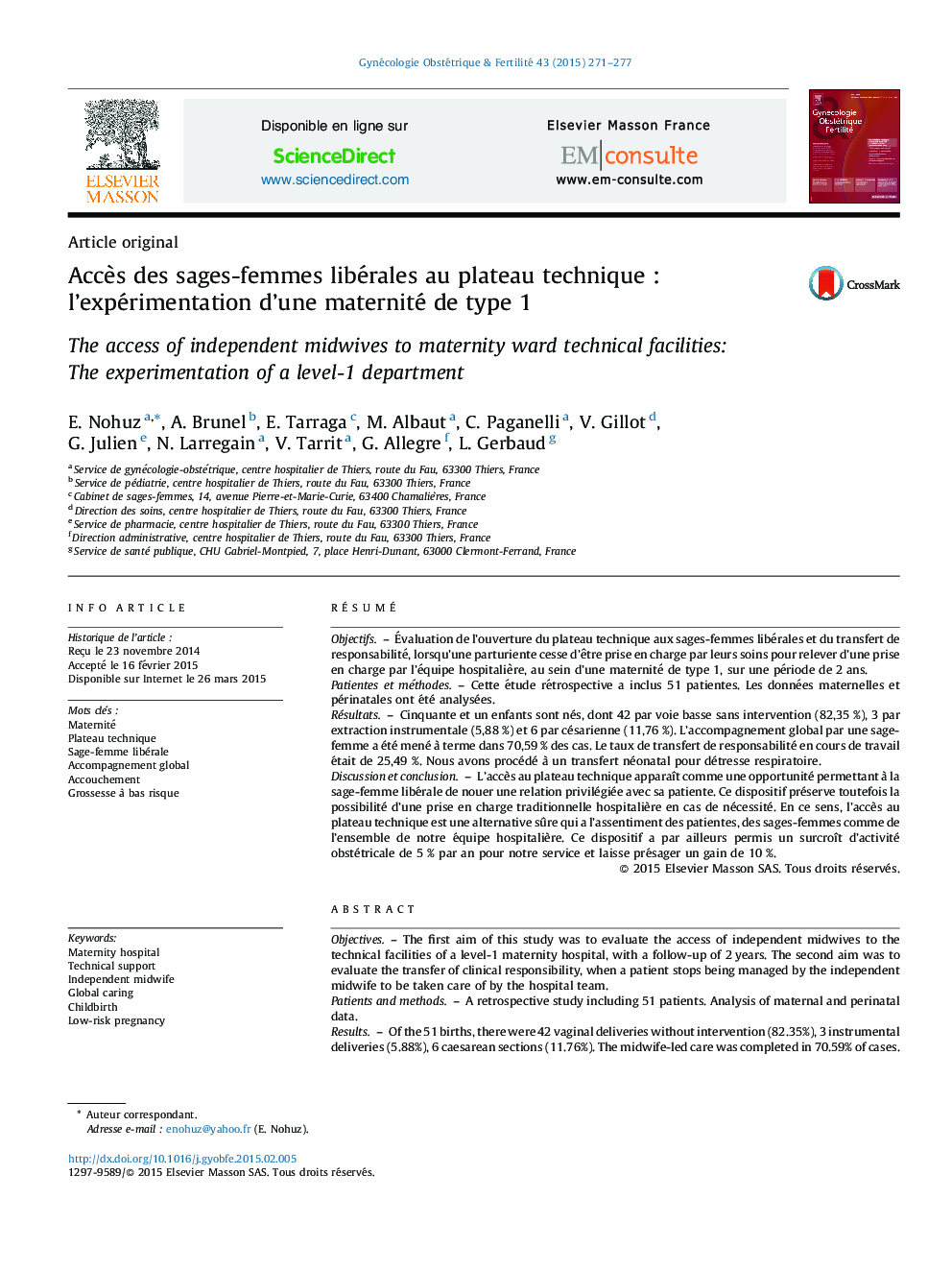| Article ID | Journal | Published Year | Pages | File Type |
|---|---|---|---|---|
| 3949202 | Gynécologie Obstétrique & Fertilité | 2015 | 7 Pages |
RésuméObjectifsÉvaluation de l’ouverture du plateau technique aux sages-femmes libérales et du transfert de responsabilité, lorsqu’une parturiente cesse d’être prise en charge par leurs soins pour relever d’une prise en charge par l’équipe hospitalière, au sein d’une maternité de type 1, sur une période de 2 ans.Patientes et méthodesCette étude rétrospective a inclus 51 patientes. Les données maternelles et périnatales ont été analysées.RésultatsCinquante et un enfants sont nés, dont 42 par voie basse sans intervention (82,35 %), 3 par extraction instrumentale (5,88 %) et 6 par césarienne (11,76 %). L’accompagnement global par une sage-femme a été mené à terme dans 70,59 % des cas. Le taux de transfert de responsabilité en cours de travail était de 25,49 %. Nous avons procédé à un transfert néonatal pour détresse respiratoire.Discussion et conclusionL’accès au plateau technique apparaît comme une opportunité permettant à la sage-femme libérale de nouer une relation privilégiée avec sa patiente. Ce dispositif préserve toutefois la possibilité d’une prise en charge traditionnelle hospitalière en cas de nécessité. En ce sens, l’accès au plateau technique est une alternative sûre qui a l’assentiment des patientes, des sages-femmes comme de l’ensemble de notre équipe hospitalière. Ce dispositif a par ailleurs permis un surcroît d’activité obstétricale de 5 % par an pour notre service et laisse présager un gain de 10 %.
ObjectivesThe first aim of this study was to evaluate the access of independent midwives to the technical facilities of a level-1 maternity hospital, with a follow-up of 2 years. The second aim was to evaluate the transfer of clinical responsibility, when a patient stops being managed by the independent midwife to be taken care of by the hospital team.Patients and methodsA retrospective study including 51 patients. Analysis of maternal and perinatal data.ResultsOf the 51 births, there were 42 vaginal deliveries without intervention (82.35%), 3 instrumental deliveries (5.88%), 6 caesarean sections (11.76%). The midwife-led care was completed in 70.59% of cases. The rate of transfer of clinical responsibility during labor was 25.49%. We conducted a neonatal transfer due to a respiratory distress syndrome.Discussion and conclusionThe access to technical support appears as an opportunity for independent midwives to establish a special relationship with their patients. However, this device preserves the possibility of a traditional hospital care when needed. This way, access to the technical support is a safe alternative that has the consent of the users (patients and midwives) as well as of the entire hospital team. Moreover, such device allowed an increase of 5% per year of our obstetrical activity with an estimated increase of 10% per year.
